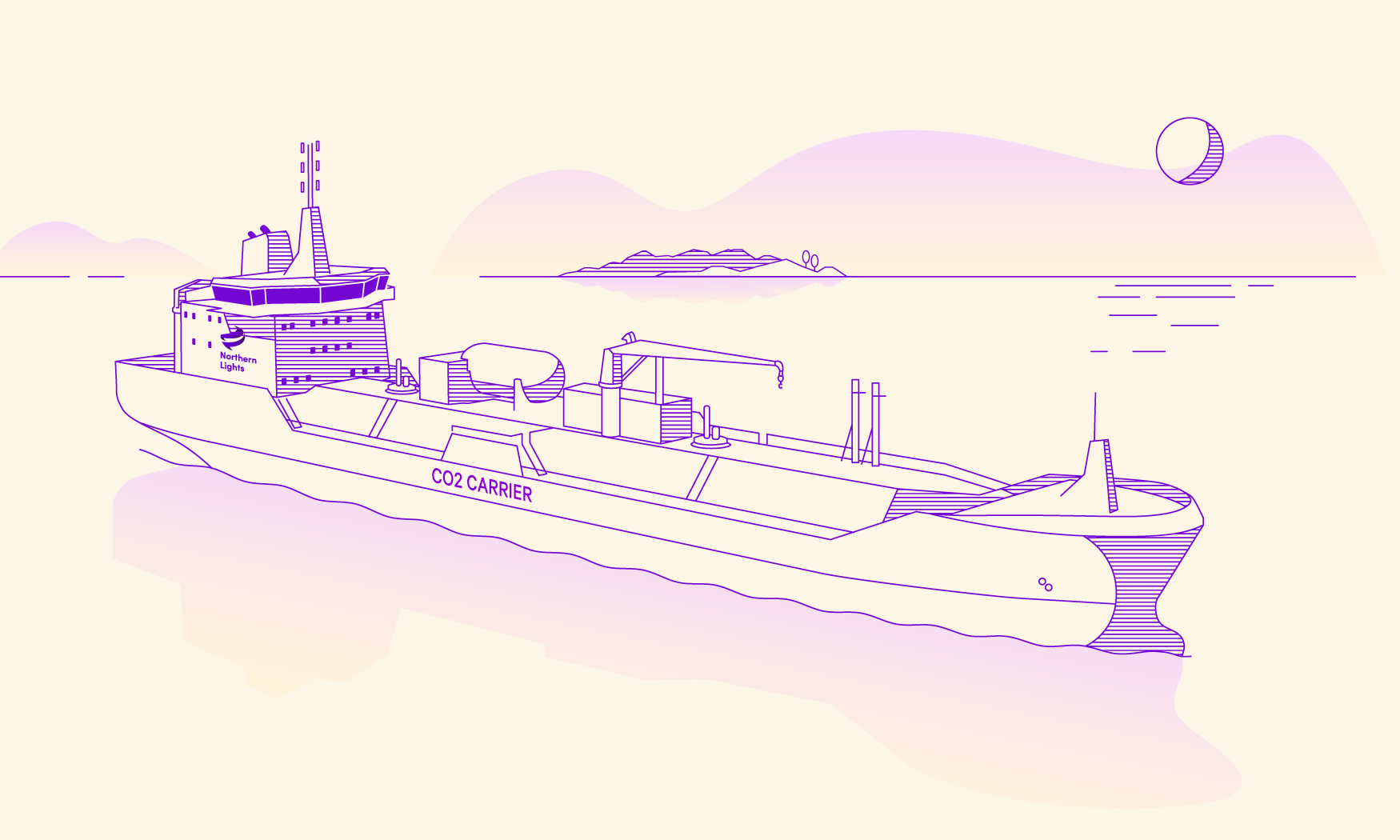What it takes to ship CO2
March 4, 2021

Northern Lights is using an innovative and versatile ship-based system for transporting CO2. Instead of building an expensive and inflexible network of pipelines, we will launch our operations with specially adapted ships that can travel flexibly between any port, keeping costs as low as possible to help decarbonisation scale up.
As part of the first phase of operations, Northern Lights is building two dedicated CO2 carriers, each with a cargo size of 7,500 m3 and a length of 130 m. These will take captured and liquefied CO2 from several emitters and transport it to our onshore storage site before it is piped 100 kilometres offshore and 2,600 m beneath the seabed for permanent storage.
We have adapted ship designs used for transporting liquefied petroleum gas, adding a liquefied CO2 carriage system and insulation to maintain a temperature that keeps the CO2 in a liquid state. This solution has the advantage of using designs that shipyards are familiar with, while potentially setting a new standard for CO2 shipping on coastal trading routes.
Liquid CO2 has a much higher density than liquefied petroleum gas, increasing the weight of the ship. Therefore, the selected design includes two large, single-cylinder, pressurised cargo tanks. These maximise the carriage volumes, improve the economics and keep the manufacturing process simple.
The combination of a high-density cargo, a high design pressure and a large tank diameter required innovative solutions, including a special high-tensile-strength nickel steel alloy with a tank wall thickness of 50 mm. Front-end engineering and design studies have concluded that the selected design is robust and able to withstand dynamic loading without exceeding the stress levels that would cause fatigue cracks to propagate.
Monitoring volumes
The CO2 volumes in the shipments must be accurately measured and reported to the authorities – tracking the captured and stored volumes as proof of sequestration. These protocols are well established in LNG shipping and will be adapted for CO2 operations. The ships will be fitted with radar technology to measure liquefied gas volumes. These will be independently verified, and the necessary documentation provided to regulators and customs officials.
To keep emissions down, the ships will be as efficient as possible. We have made a study of wind and wave conditions on the trading route and hull forms will be optimised for the route and regular manoeuvring profiles established. The primary fuel for the ships will be LNG. Other technologies, such as wind assistance and air lubrication will be installed to reduce carbon intensity.
Transporting CO2 may become an attractive market for ship owners if regulators require the full decarbonisation of industrial products. For now, there is significant risk. By offering an open-access, cross-border implementation of such a network, Northern Lights is enabling the first European full-scale CCS value chain, paving the way for cost reductions and scale-up of similar, future projects.

